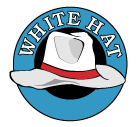Around 50,000 years ago the first humans arrived in the country now known as Australia. These Australian Aboriginals had long named all major features in the Australian landscape by the time that Europeans first stumbled across the island continent. With European exploration and settlement came a major set of new names, often in ignorance of the fact that established names already existed. The trend has recently received some appropriate correction with places like Ayers Rock and the Grampians also being referred to by their Aboriginal names of Uluru and Gariwerd.
Place names in Australia may best be qualified as follows:
- Aboriginal names - large numbers of country towns retain these evocative names. In particular, repetitive names like Wagga Wagga, Djin Djin, Woy Woy etc are nearly always Aboriginal. If you look at a map of Australia you will find that the majority of place names are Aboriginal in origin.
- Transplanted names - names chosen by explorers and settlers to remind them of "the home country" such as New South Wales, Brighton, etc.. Tim Flannery in his book The Future Eaters points out the irony of the naming of places such as New Guinea, New Zealand and New Caledonia because we now know these 'new' countries to be considerably older than the 'old' places after which they are named. Occasionally, overseas places are named in tribute to Australian ones. Hence the city of Melbourne in Florida is named after Melbourne in Australia (which in turn was named after the British Prime Minister of the time).
- Tribute names - places named after prominent people of the period. It was common for explorers to name places after their funders, patrons or prominent people of the time. Although this may seem shameless toadying nowadays, it was considered an essential part of the patronage system. An explorer's chance of mounting a further expedition may hinge on the the honour he had bestowed on someone (no matter how unworthy) by immortalising him or her in a place name. Similarly, people in public positions would honour those 'further up the line'. Hence Governor Bourke named Melbourne after the English Prime Minister and Williamstown after the King (and Bourke Street after himself).
- Official (committee) names - names provided by official committees. This is common for things like electoral districts, shires and the like. These names often attempt to publicly recognise important historical people or events connected with a district. For instance, many of the suburbs and streets in Canberra are named after significant Australians as befits a specially created national capital.
- Marketing names - it has become common in recent decades for developers to choose names with a distinct marketing spin for new suburbs and towns. If you are about to subdivide a piece of barren land covered with rocks and thistles, you will probably put in a few artificial ponds and call it Paradise Lakes. You will then call the streets Spinnaker Street, Lakeview Avenue, Maritime Drive and the rather soul-less collection of shops will be called a 'Village'.
- Abbreviation - Australians love to abbreviate words, and place names are no exception. Thus Wangaratta may be popularly called "Wang" or Broadmeadows called "Broady".
Dutch names
The Dutch were the first Europeans to explore the coast of Australia (see Voyages of Discovery) and number of names remain from before the arrival of Captain Cook and the English. The first recorded European place name is that of Cape Keerweer in Queensland named by Willem Janszoon in his voyage on Duyfken in March 1606 Later names resulting from early Dutch exploration include the Gulf of Carpentaria, Arnhem Land, St Peters & St Francis Islands, Duyfken Point and Rootnest Island. The western part of Australia was also often named as New Holland in 1645. Abel Tasman, the first European to sight Tasmania named it Van Diemen's Land after the sponsor of his voyage, but this was to be changed to Tasmania in 1855. Tasman named numbers of places in Tasmania and some of these names survive today.
The naming of Australia
The occurrences leading to the naming of Australia are not simple so we have listed them on a separate page - The White Hat Guide to the Naming of Australia.
See also:
- The naming of Melbourne's streets
- The naming of Melbourne's suburbs
- The naming of Toorak
- Government Names honouring Australian People
Useful resources:
The White Hat Quiz - Australian Place Names
- What Australian city was named after a certain Mr Townshend?
- Melbourne was named after a British Prime Minister. Name another Victorian town that was named in honour of a British Prime Minister.
- What Australian suburb renamed itself after an American industrialist and philanthropist in the hope of gaining material support from him?
- What Australian suburb named itself after a brand of agricultural machinery?
